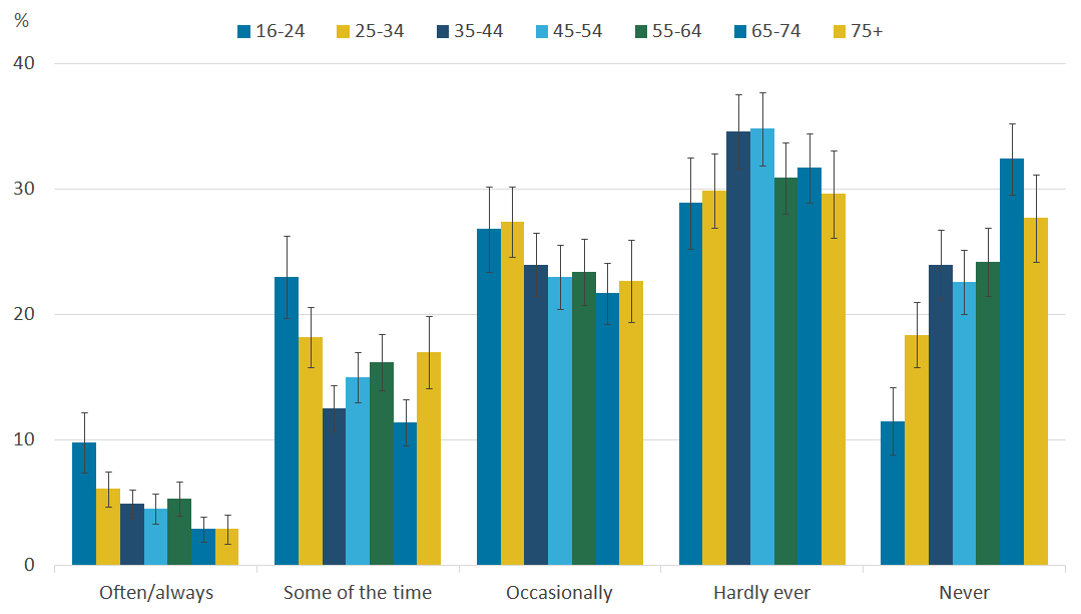Last week was Loneliness Awareness Week, a week established by the Marmalade Trust to raise awareness of loneliness and social isolation, to reduce the stigma of loneliness and to help people connect. This will be its third year and the movement is growing. This isn’t surprising when studies have shown that in the UK more than 9 million people always or often feel lonely
[1].
The Costa Book Award winning novel Eleanor Oliphant is Completely Fine was written by its author Gail Honeyman after she had read an article on the subject of loneliness which reported on an interview with a young lady who said she would come home from work on a Friday and then wouldn’t speak to anyone again until Monday morning. Such a situation seems incredibly sad but worse yet, extensive research shows that loneliness poses a number of risks to physical and mental health, including:
-
Increased risk of developing coronary heart disease and stroke (Valtorta et al, 2016),
-
Increased risk of high blood pressure (Hawkley et al, 2010)
-
Greater risk of cognitive decline (James et al, 2011)
-
Higher risk of the onset of disability (Lund et al, 2010)
-
More prone to depression (Cacioppo et al, 2006) (Green et al, 1992)
-
Predictive of suicide in older age (O’Connell et al, 2004); and,
-
One study concludes that lonely people have a 64% increased chance of developing clinical dementia (Holwerda et al, 2012).
Some of the studies are more worrying. Not long ago a stark headline was being carried by a number of newspapers. A meta study (a study of studies) of some 3.4 million people by Professor of Psychology Julianne Holt-Lunstad and her research team[2] had concluded that weak social connection has the same risk of death as smoking 15 cigarettes a day. Moreover, according the findings it doesn’t matter whether the loneliness is perceived or actual the risk to health remains the same[3].
The NHS ‘Behind the Headlines’ critique of this particular study concluded that the research ‘provided some evidence that the isolation was causing ill health, rather than the other way round, but we can't be certain[4]’. Whether or not this particular headline is as troubling as it appears the remaining evidence that suggests that loneliness and social isolation can have adverse impacts upon our health and well-being and upon the UK economy. Research reported by the Co-op suggests that loneliness costs UK employers £2.5 billion per year.
The causes of loneliness are not surprising. They include but are not limited to:
-
Changes in day-to-day routines (such as retirement),
-
A lack of or loss of friends (such as through bereavement or divorce),
-
Restricted mobility, cognitive and sensory impairment or other causes of poor physical health (which then create a vicious circle),
-
Financial limitations (limiting ability to participate in activities),
-
Personal characteristics (such as age, stage in life, ethnicity, sexual orientation); and,
-
Neighbourhood characteristics (such as a lack of amenity, layout of streets, crime).
Loneliness is not only restricted to those who are alone or are of a particular age group. “Young or old, loneliness does not discriminate” said the late Jo Cox MP who, with her colleague Seema Kennedy MP, set up a cross-party Loneliness Commission in 2016.
National and many local planning policies seek to ensure that developments create healthy and safe communities. Many of the recent call to action publications by a variety of respected organisations, charities and commissions focus on a wide range of measures to improve loneliness and to reduce social isolation. However, not as much has been written in these documents about how the built environment can contribute to tackling its causes.
As place makers we can help to create places that encourage social connection and to create spaces that people want to use and are able to use that are safe and secure and that are accessible to all. These are just a selection of ways that creating spaces and places can help to increase both formal and informal social interaction which may in turn help to reduce loneliness:
- Making dementia-friendly spaces that are designed to encourage people out of their homes, with connections and routes that are accessible and safe (The RTPI has published practice advice on this);
- Ensuring that amenities and facilities are in walking distance and the routes to these places are safe, legible and encourage more people to use them;
- Delivering a range of places for leisure activities and where people can meet - from community halls to bowling greens, and from public squares to public footpaths;
- Including facilities for physical activity such as formal parks and informal open spaces, playgrounds for children where parents can mingle, as well as allotments for all ages;
- Ensuring that the spaces to meet are safe, with excellent natural surveillance through active frontages and well-considered layouts;
- Creating jobs and educational opportunities with further enhancements by creating dedicated indoor and outdoor spaces for people to meet during lunch breaks (rather than eating a sandwich at a desk); and,
- Places for cultural activities through formal and informal spaces such as heritage assets, coastal paths and outdoor theatres.
Understanding why places and spaces are important in helping to combat loneliness is a good starting point. Indeed, many of the measures are integral to high quality urban design decisions but can be easily missed although our experience, from working on health impact assessments for a number of projects, is that the measures can be simple and often not costly.
Whilst we cannot solve the factors causing loneliness entirely, placemakers can be part of a range of measures that help.




